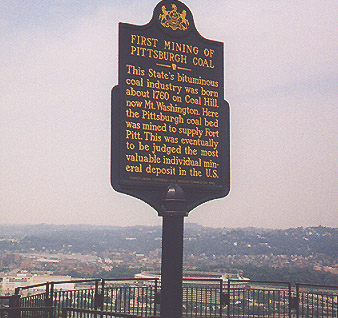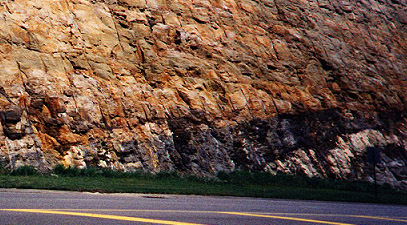 |
 |
 |
 |
 |
 |
 |
 |
| Slag |
 |
 |
 |
Pennsylvania Coal

During the Pennsylvanian Period much of the area was covered by swamps in the landward part of a large deltaic system. Pittsburgh was close to the equator and had a hot, tropical climate in which plant life flourished. Once the plants died, they fell to the bottom of the quiet swamp water. The first plants to die were "eaten" by bacteria, quickly using up all of the oxygen in the stagnent water. With no oxygen and lots of humic acid in the water (formed by plant decay), the bacteria were no longer able to break down dead plants. Instead, the plant parts were buried in the muck at the bottom.
The layer of dead and partially rotted plant parts was eventually buried by sediment. Deep below the surface, it was squeezed and heated, "cooked" to nearly pure carbon. This final product is coal (Carbonization).
Coal is widespread throughout Pennsylvania, with large amounts
found in southwestern Pennsylvania.

Coal historically has been an important part of the local
economy. Coal beds can be seen in many local roadcuts.
Coal from a
road cut on Route 28 just past Etna.(Site 5 on the map)

An organic-rich layer in Moon Township, located
along the RPS road near
Montour Run Road, just across from the Robinson Town
Center entrance. (Site 1 on the map)

Links:
Plant Fossils Of West VirginiaCoal Association Of Canada Quick Facts On Coal
Electronic Field Trip To A Coal Mine